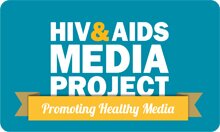ART in South Africa
 The South African government provides free antiretroviral treatment (ART) to HIV-positive people. ART is mainly distributed and monitored through clinics (as part of primary health care) in order to ease the burden on hospitals.
The South African government provides free antiretroviral treatment (ART) to HIV-positive people. ART is mainly distributed and monitored through clinics (as part of primary health care) in order to ease the burden on hospitals.
ART is also provided at secondary and tertiary health care facilities (hospitals), but only in certain cases.
First and second line therapy
Treatment for HIV in South Africa is divided into first and second line therapy. There are a number of ARV combinations in each line.
A line of treatment or treatment regimen comprises of a combination of three ARVs (sometimes two ARV compounds are combined into one pill e.g.Truvada, which combines tenofovir and embitricitabine) is prescribed in order to keep the virus under control.
Eligability for free HIV treatment
All HIV-positive people (including foreign nationals) can start first line HIV treatment when their CD4 count drops below 350. If HIV eventually becomes resistant to this treatment or the side effects are particularly bad the person is switched to second line therapy.
But very few people taking ART have to be switched to second line therapy. People usually have to be switched because they do not take their treatment properly (doctor's call this non-compliance) which causes HIV to become drug resistant.
Second line therapy in SA involves the introduction of a protease inhibitor which increases the likelihood that the treatment will work.
 The ART requirements for pregnant women in their first trimester (the first 12 weeks of pregnancy) are slightly different to standard ART regimens. Women in the first trimester of pregnancy are not given efavirenz (EFV).
The ART requirements for pregnant women in their first trimester (the first 12 weeks of pregnancy) are slightly different to standard ART regimens. Women in the first trimester of pregnancy are not given efavirenz (EFV).
For more information on PMTCT and ART treatment for pregnant women please see our PMTCT section.
ART for Children
The ART regimens for children are different to those for adults and adolescents.
In terms of eligability for HIV treatment, children aged between 1 and 5 years of age can begin ART when their CD4 count drops below 750. Children 5 years of age and older begin ART at the same CD4 count (350) level as adults, adolescents and pregnant women.
Children under 3- First line therapy for children under 3 involves a combination of nucleoside/nucleotide reverse transcrptase inhibitors (NRTIs) (abacavir & lamivudine) and a protease inhibitor (PI) (lopinavir+ritonavir).
- Second line therapy involves the introduction of the NRTI ddI (didanosine), which does not appear in the adult and adolescent regimens.
- The first line regimen for children over 3 involves a combination of NRTIs (usually abacavir & lamivudine) and a non-nucleoside reverse transcriptase inhibitor (NNRTI) (efavirenz).
- Second line regimens for older chilfren comprise of two NRTIs (Zidovudine & Didanosine) and the introduction of a PI (Lopinavir+ritonavir).
 Further reading
Further reading
- SA Government's Clinical guidelines for the management of HIV & AIDS in adults and adolescents.
- Clinical guidelines for Prevention of mother to child transmission (PMTCT) of HIV
- Government Guidelines for the Management of HIV in children.
Page last updated: 14 October 2011






